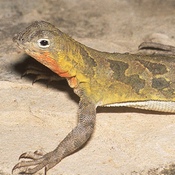Have you ever heard of the spot-tailed earless lizard? Don't worry - we hadn't either.
The rare lizard, once spread across portions of the Eagle Ford region, has largely vanished, the San Antonio Express News reported in early October of 2014. And now the species has the potential to disprupt oil & gas development in the region, if it is designated as threatened or endangered by the U.S. Fish & Wildlife Service (USFW), under the endangered species act (ESA).
Endangered and Threatened Species in Texas
Industry and regulators fear government intrusion via the ESA could ultimately hurt Texas' lucrative oil & gas industry. And those fears are not unwarranted - in 2012, a $29-million road construction project in San Antonio, TX, was stopped, when it was discovered the endangered Bracken Bat Cave Meshweaver spider's cave habitat would be disrupted. Construction is slated to begin again in 2015, but with a new price tag of $44-million to accommodate for the spider.
In late March of 2014, the USFW listed the lesser praire chicken as threatened under the ESA. The species is concentrated in the western portion of the state and in the Panhandle, which presents more of a threat to oil & gas operations in the Permian Basin, than the Eagle Ford region. However, several species, including the spot-tailed earless lizard, have the potential to impact the Eagle Ford.
Read more: The Lesser Praire Chicken's Impact on Texas Oil
Environmental Group Pushing for Lizard's Protection Under ESA
Santa Fe, NM-based WildEarth Guardians, an environmental group, submitted a petition in 2010 to place the spot-tailed earless lizard under the endangered species act. In their petition, the group says the species may already be extinct in the wild. In 2011, USFW said listing the species as endangered or threatened may be warranted, but that doesn't mean the lizard will ultimately receive either of those designations. The process can take years for a species to receive a designation from the USFW.
The Texas Railroad Commission (RRC), which regulates the oil & gas industry in Texas, has taken a strong stance against the federal government and the ESA.
“we must not allow the Obama administration to use the Endangered Species Act as a weapon against the oil and gas industry.”
If or when the lizard receives an endangered or threatened designation from the USFW, oil & gas development would be impacted in the Eagle Ford. With the play hitting 1.5 million b/d in September of 2014, this has the potential to be a notable issue for South Texas' burgeoning oil and gas economy.


